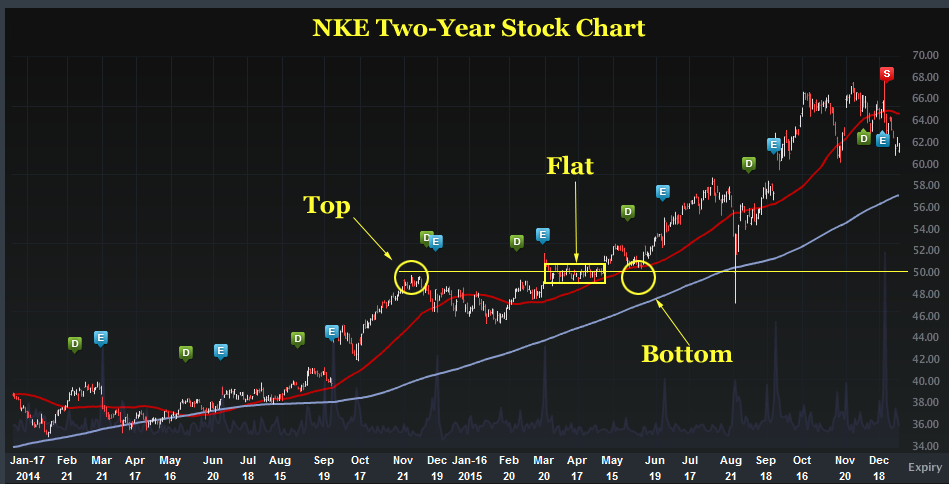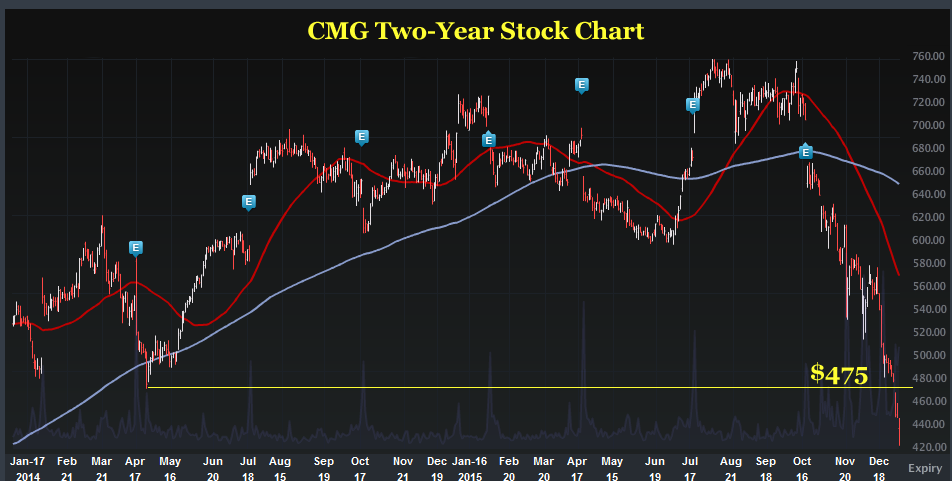How to Invest and Profit from This Tumbling Market
Investing in a Toppy Market
Written by Ophir Gottlieb, 01-07-2015Follow @OphirGottlieb
PREFACE
We're in a toppy market. Valuations are stretched and monetary policy is no longer accommodating. But owning stocks has been a wealth creating strategy for a century. No matter how bad the stock market has gotten, it has always gone higher after a collapse.
The stock market is the single greatest wealth redistribution mechanism created by man to take money from the impatient and transfer it to the patient. But, patience does not mean inaction.
This isn't a fluff piece, this is a precise method - an instructional guide -- on how to navigate a market like this.
THE POWER OF THE MIND

The single greatest risk to our own wealth creation in the stock market is ourselves. I won't get existential, just know that perspective and mindset are more important than which stocks you own.
As people, we simply tend to fill empty space with negativity -- they call it human nature. What the hell am I talking about? Try this:
Your family is on a flight to Europe for vacation. You catch news that a commercial airliner has crashed over the Atlantic. What are you thinking when you hear that news?
The vast majority of us (certainly me) immediately go to tragedy -- our families have died. Rarely do we think, "on a typical day there are around 30,000 flights across European airspace, so it's very unlikely the worst case scenario just happened."
It's the same thing with stocks.
We can and must change our perspective to one of so that:
1. We can limit our losses with rules based trading.
2. We can maximize our profits with rules based trading.
Understand the companies you are invested in. Understand that prices can fluctuate wildly, but businesses rarely do. A good business tends to stay a good business, no matter what its stock price does.
It takes more than click bait and a 140 characters to be an expert and journalists aren't trained to understand the market. Get free news alerts (once a day) from us and you will be the expert in the room. Get Our (Free) News Alerts. Be Powerful.
STEP 1: MAKING THE RULES
While we do have a "Top Picks" section on CML Pro, buying a stock is not a one and done action in this market. We need to systematize our approach so our crocodile brain’s, fear-based perspective doesn’t get in the way of our investing.
In a toppy market like this, I rarely buy full positions all at once. In fact, I have two distinct sets of rules depending on the type of company I’m investing in. Let’s dig in.
STEP 2: RULES FOR A BLUE CHIP
Let's say we have $10,000 we're planning to invest in a stock. We want to buy Nike (NKE), but we're leery of the broader market and that the stock is trading near all-time highs. Here's our approach:
1. We can buy half a position today for $61.50. We have now invested $5,000.
2. We place a limit buy order for the rest of our position at some radically lower level. I call it my 'wish list' price. How you pick this price is up to you. If you're a chartist, you likely have a precise methodology. For me, I would do it like this.

I see where the stock topped, it hit a flat area, and then bounced as a bottom all at about $50 a share. For true chartists, I just gave you a gag reflex, sorry about that. I see that price and think, "man, I would love to own NKE for $50."
So, I place a limit order to buy the second half of my position for $50.
Note for Option Traders
With options, we can actually increase our return even if the lower price is never reached. By selling a put at the $50 strike, we collect the value of the put, regardless of what happens. If the stock does go down to below $50, then the holder of the contract will sell us 100 shares of NKE at $50, but we keep the value of the option.
STEP 2: THE EFFECT
Here's what happened. I just changed my perspective, entirely.
When I see a blood red market and NKE falling, I think, "I might get that $50!" That's very different than, "Oh now, I think NKE is tanking." That change in perspective is more important than the prices you choose. I know that seems crazy, but it is. It implicitly changes a mindset of fear and dread into one of hope and optimism.
If you don't like the touchy feely idea of mindset, this strategy also added a precise plan to follow and brings the dollar cost average of your position down.
Slight Alternative
If you prefer to break your buys into groups of three or four, that's personal taste. Do what feels right. This was a simple example of staggering two buys. You can even start your first buy at the lower level, so as not to initiate a position until the stock drops substantially from the current price.
Do you enjoy understanding what's really going on in a company beyond the headline noise? Then Join Us: Get Our (Free) News Alerts Once a Day.
STEP 3: RULES FOR 'NON BLUE CHIPS'
I actually apply a nearly opposite discipline for companies that are non blue chips but which yields the same result: remove fear, create perspective and a strict trading strategy.
For riskier investments, rather than set a target to buy more stock, I set a much tighter target to instead exit the position. Let's use Chipotle (CMG) as an example. Believe it or not, this is the two-year chart for CMG:

I mentioned on Twitter that I was considering a long position in CMG for $475, and you can see why I set that target with that yellow line going back to support more than a year ago. I didn't place the trade, but if I had, here's how the 'non blue-chip' stock strategy differs from the first example I gave.
I would have bought CMG for $475, but the lower limit price I set would not have been to buy more, but rather to sell. I would have set a pretty tight limit of a 5% loss, which means if CMG hit ~$450, I would have been a seller.
You see, when a stock leads the market down, that is not the investment to buy more of as it falls, it's an investment to cut your losses on. In any case, panic and fear would have been totally alleviated knowing that I was risking just 5% of $10,000, or $500 in this trade. The stock hit the limit, I'm out, and I live to trade another day.
This does beg the question, though: "When is it time to actually double down?"
STEP 4: WHEN TO DOUBLE DOWN
Depending on your appetite for risk, there may come a time when you want to enter a position with double the size. In this case, perhaps a stock drops far enough that the $10,000 investment was hit in two chunks of $5,000 and now the stock is yet lower and it feels like time to buy more.
First, this is really risky and the only time when substantial losses can mount. But, it's also something we do. For some of us, this is the way we invest. I do it very rarely.
THE UNBREAKABLE RULE: DOUBLE UP, NOT DOWN
This is the rule. In fact, it's a commandment from the market. We never (ever) double a position size in a stock that's dropping if it led the market lower. CMG is off the table for a double down. So is Twitter (TWTR).
IF, we use the double down investment strategy, it's only in companies that led the market higher. I know this sounds counter intuitive in terms of "value," but never forget, the stock market isn't crazy. The companies that lead the market higher do so generally for good reason. Equivalently, the companies that drop in a bull market also generally do so for good reason.
Examples of companies that led the market higher: NKE, SBUX, GOOGL, FB, NFLX, NVDA
In our NKE example, if you peak back at that chart, $40 could be a spot to double down.
THE OTHER UNBREAKABLE RULE: BET ON BLUE
We also never double down in a stock that isn't a blue chip. I love OLED, for example. We wrote a gorgeous research dossier on it and I own it. But this is a component maker, not a blue chip. If the stock tumbles and we want to stay an owner, that's fine, but we don't double down on companies that aren't blue chips.
We won't lose our life's savings in blue chips. We can certainly lose our life's savings in riskier entities, no matter how compelling the investment thesis.
HINTS FOR THE FUTURE
There are very specific things to watch on a broader scale. We may not catch the top of the market, but we can avoid sitting in it until the bottom. I point you to the prior research dossier "Are We in a Bubble?" available on CML Pro.
In that piece I examine six exact items to measure and how exactly to know if a bubble has formed.
CONCLUSION
There is a way to trade a toppy market. Mindset and perspective are important. A plan is not just a word -- it's an action.
If at any time the market gets too volatile for you, then you can always stop trading. Preserving wealth and sanity are remarkably good antidotes to an uncertain market.
One last thing to remember. No matter how bad the stock market has gotten, it has always gone higher after a collapse. We have not had our Japan moment, nor is there any reason to believe that we will. A sour, nasty, bloody red market has always turned into a sweet, beautiful Irish green market, and it has done it relatively quickly.
Don't panic. Owning stocks has been a wealth creating strategy for a century. But you must be diversified, risk conscious and knowledgeable.
WHY THIS MATTERS
The top analysts, asset managers and hedge fund managers are keenly aware of the data that will move markets and they know exactly when retail traders are selling everything they own by looking at the average trade size. This is how they pick their stocks even if the market goes sideways or down.
The information asymmetry that exists between pros and non-pros has transferred massive wealth to the top 1%. That information asymmetry is no longer acceptable to us. In fact, it infuriates us.
This is just one of the fantastic reports CML Pro members get along with all the charting tools, top picks for 2016, research dossiers and alerts. For a (very) limited time we are offering CML Pro at a 90% discount for $10/mo. with a lifetime guaranteed rate. Join Us: Get the most advanced premium research delivered to your inbox along with access to visual tools and data that until now has only been made available to the top 1%.
Thanks for reading, friends.


